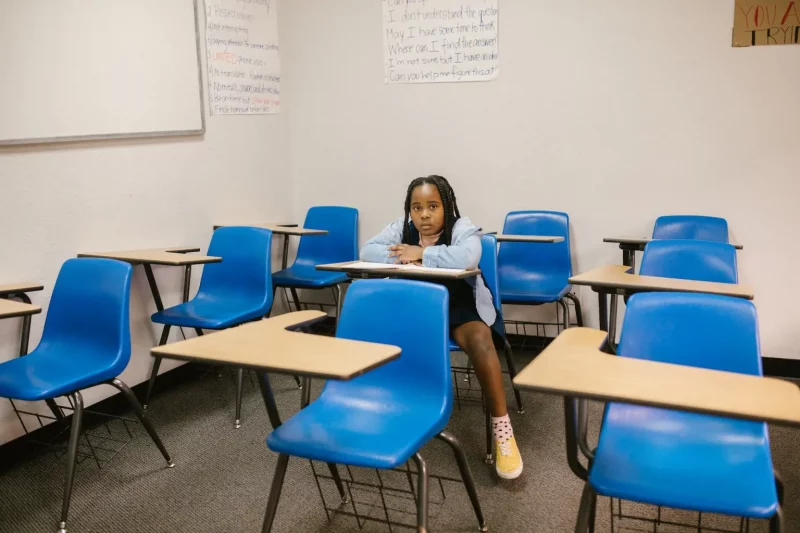The Kids Are Not Alright: Addressing Student Trauma
Share
Explore Our Galleries
Breaking News!
Today's news and culture by Black and other reporters in the Black and mainstream media.
Ways to Support ABHM?
By Maya Pottiger, Word in Black
In 2021, children’s hospitals saw a 153% increase in visits to emergency departments for kids ages 5-18 attempting suicide and other self injuries compared to five years earlier.

There’s a new incident every day.
Most recently, it was three Black football players being shot to death following a school field trip. Right before that, there was the video of a white teacher telling Black students that his race is “the superior one.” Earlier this year, a different football team’s season was suspended after reports of alleged “disturbing” racist remarks in a group chat. And there was the other football season that was canceled after students participated in a “mock slave trade” — which somehow isn’t uncommon, with at least three other instances of it in the last year.
But these are only the ones that are filmed. The ones that gain traction online.
On top of these recorded incidents, Black students face racism every day. And on top of that, there’s still residual trauma from the pandemic. These combined forces are wreaking havoc on students’ mental health and, subsequently, their ability to perform in school.
“We aren’t doing a good job,” says Lishaun Francis, the director of behavioral health at the California-based organization Children Now. “Mental health has become a big thing in the last two years for folks, but the reality is, as a nation, we have under-invested in mental health for decades.”
The cracks are beginning to show. COVID-19 shone the light on the limitations of our public health system.
“We added on more emotional distress,” Francis says, “and the cracks in the foundation are really showing that it has problems.”
[…]
Black students, especially, may be having different experiences than their classmates, says Dr. Janice Beal, who owns a private practice in Houston and partners with The Steve Fund as a mental health expert. Whether it’s a home environment, difficulty processing trauma exposure, or specific discrimination, like anxiety over the fear of being stopped by police, there’s an impact if these feelings build up and go unresolved.
Beal equated these feelings to lava in a volcano: They stay at the bottom for a long time and pressure starts to build.
“Now what may happen is it may be buried, and no one is talking about it, and no one’s addressing it,” Beal says. “At some point, it explodes and exposes things that may not be associated with what their original trauma was, but they may have kept.”
This is especially true among communities of color, who are less likely to seek mental health treatment. But the pandemic helped to shift that.
Find out more about student mental health.
Childhood trauma has been labeled a mental health crisis, but at least one school district has found ways to help.
ABHM’s breaking news page includes more stories like this.











Comments Are Welcome
Note: We moderate submissions in order to create a space for meaningful dialogue, a space where museum visitors – adults and youth –– can exchange informed, thoughtful, and relevant comments that add value to our exhibits.
Racial slurs, personal attacks, obscenity, profanity, and SHOUTING do not meet the above standard. Such comments are posted in the exhibit Hateful Speech. Commercial promotions, impersonations, and incoherent comments likewise fail to meet our goals, so will not be posted. Submissions longer than 120 words will be shortened.
See our full Comments Policy here.